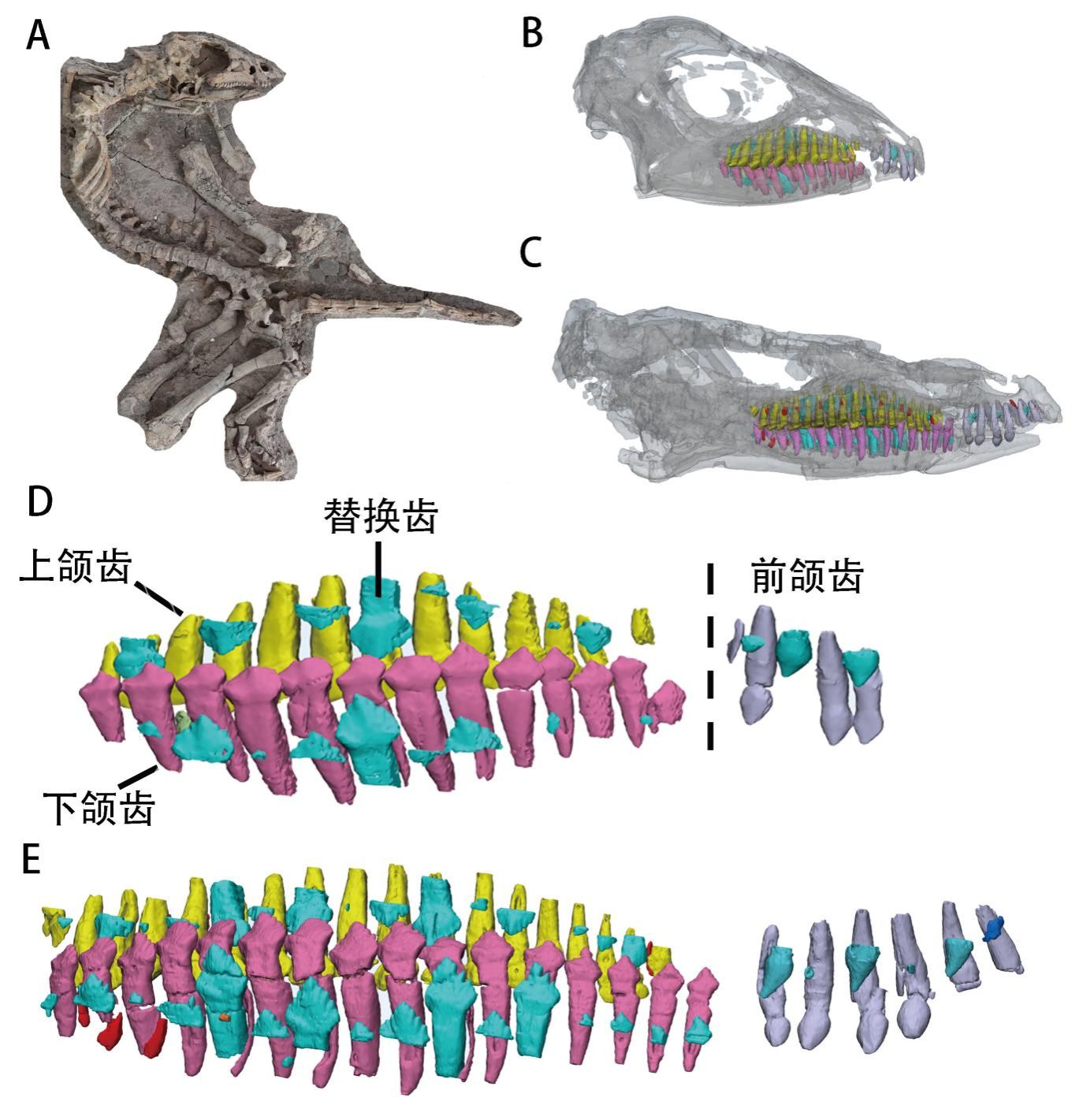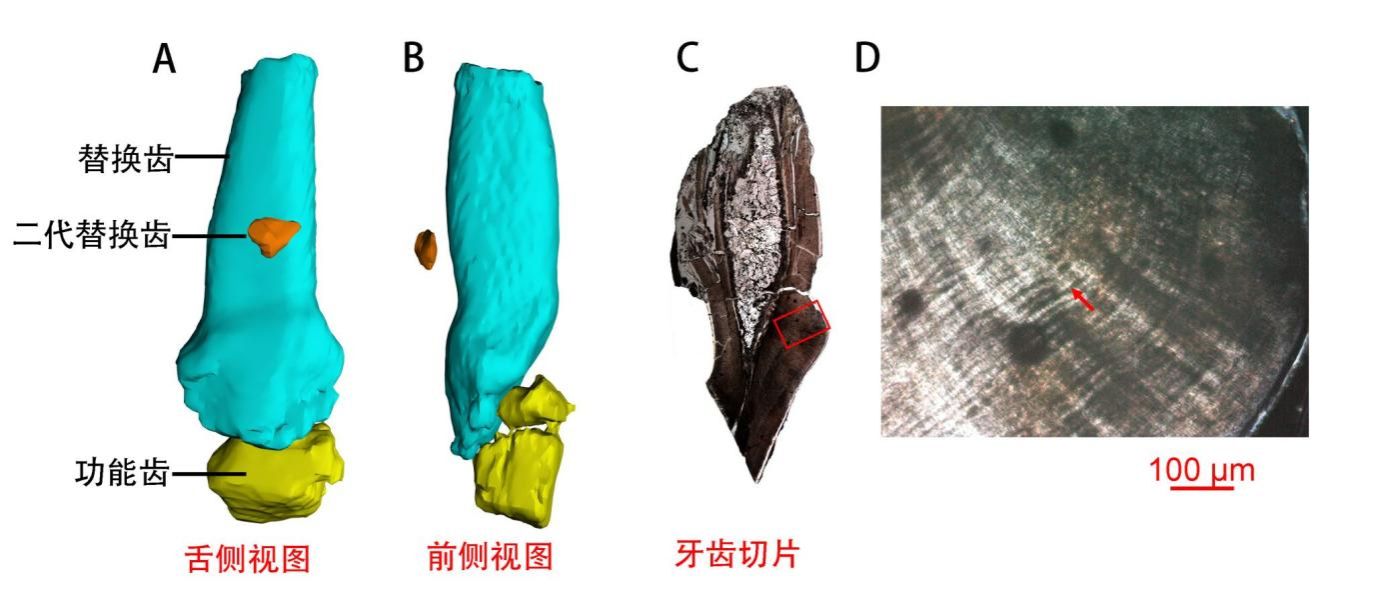Mammals, including humans, only replace their teeth once in a lifetime, while reptiles constantly replace their teeth in a certain pattern, making it a norm for them. So, how did dinosaurs replace their teeth millions of years ago?
The research team led by Associate Professor HAN Fenglu from the School of Earth Sciences of CUG, in collaboration with the researchers from the Institute of Vertebrate Paleontology and Paleoanthropology, Chinese Academy of Sciences, Yunnan University, and Yifu Museum of CUG, conducted an in-depth study on the tooth morphology and replacement patterns of the early-diverging neornithischian Jeholosaurus. They further statistically analyzed and investigated theways of tooth replacement of the early-diverging neornithischian Jeholosaurus, revealing the pattern of tooth replacement in the neornithischian Jeholosaurus throughout their over 100 million years of evolution. These findings were published online in the BMC Ecology and Evolutionon on April 16, 2024.
The early-diverging neornithischian Jeholosaurus is a small, bipedal herbivorous dinosaur from the Early Cretaceous Jehol Biota. The researchers conducted high-resolution X-ray micro-CT on 6 specimens and reconstructed 3D models of the dentitions.

Fig. 1(A) The skeleton ofshangyuanensis; (B) transparent view (early juvenile); (C)transparent view (subadult); (D) 3D reconstruction of dentary dentitions in lingual view; (E) 3D reconstruction of dentary dentitions in lingual view.
Dinosaur teeth are divided into functional teeth (those in use and performing their function) and replacement teeth (newly grown but not yet serving the function of chewing). A second generation of replacement teeth is observed in the subadult specimen, with three teeth concurrently present in a single tooth socket, representing the nascent stage of the tooth battery.

Fig. 2 (A, B) maxillary tooth replacement(red); (C, D) osteohistological slice. The arrow in D indicates the growth line.
The maxillary tooth replacement rate in Jeholosaurus is probably 46 days, which is faster than that of most other early-diverging ornithischians. During the ontogeny of Jeholosaurus, the premaxillary tooth replacement rate slows from 25 days to 33 days with similar daily dentine formation.
What’s more, the tooth replacement rate exhibits a decreasing trend with ontogeny, as in Alligator. In a phylogenetic context, fast tooth replacement and multi-generation replacement teeth have evolved at least twice independently in Ornithopoda, and their analyses suggest that the early-diverging members of the major ornithischian clades exhibit different tooth replacement patterns as an adaption to herbivory.
Link: https://doi.org/10.1186/s12862-024-02233-2
(Edited and translated from the Chinese version)